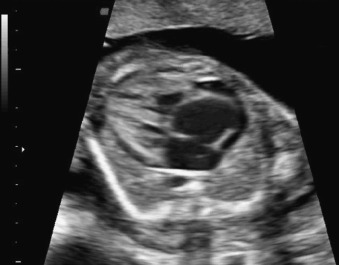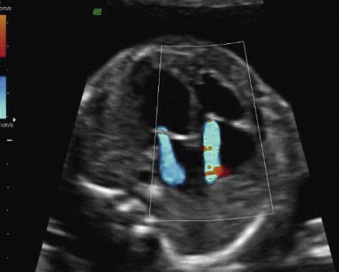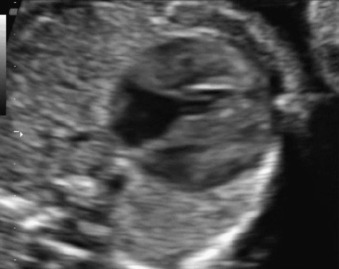Abstract
Cardiomyopathy is a rare disease defined as a primary cardiac muscle anomaly with no association with structural heart or pericardial disease. It exhibits a great variability of forms, but most fetuses have poor outcomes.
Keywords
dilated cardiomyopathy, hypertrophic cardiomyopathy, noncompacted cardiomyopathy, cardiomegaly
Introduction
Cardiomyopathy is a very rare disease in the fetus. It is almost invariably associated with a poor outcome. Only isolated case reports and small case series have been published. There is a great variability in presentation, etiology, and hemodynamic consequences, which hampers diagnosis and parental counseling.
Disease
Definition
Cardiomyopathy is defined as a primary cardiac muscle anomaly with no association with structural heart or pericardial disease.
Prevalence and Epidemiology
Only isolated case reports and small case series have been published. In series including neonates and infants, cardiomyopathies represent about 2% to 7% of all cardiac defects. The prevalence is thought to be higher during fetal life, probably around 6% to 11%. The difference is explained by intrauterine loss, which may occur in one-third of affected fetuses.
Etiology and Pathophysiology
Fetal cardiomyopathy may manifest in several forms, as follows:
- •
Dilated or congestive cardiomyopathy is the most frequent cardiomyopathy during fetal life; it is characterized by cardiomegaly owing to dilatation of either or both ventricles and impaired ventricular function ( Fig. 93.1 ). There may be great variability in the presentation of dilated cardiomyopathy in the fetus. Aside from primary forms, which are very rare, several conditions, including infectious (cytomegalovirus, parvovirus, coxsackievirus), hemodynamic (monochorionic twins), cardiac (arrhythmias), genetic, and metabolic diseases, may be associated with cardiac dilatation. Dilation of valvular rings can lead to valvular insufficiency ( Fig. 93.2 , ), which in combination with primary cardiac failure, explains a high association with fetal hydrops.

Fig. 93.1
Mixed cardiomyopathy with cardiomegaly, hypertrophic myocardium, and dilatation of both atria.

Fig. 93.2
Severe tricuspid and mitral insufficiency secondary to dilatation of valvular rings.
- •
Hypertrophic cardiomyopathy is defined as an enlarged heart with hypertrophic myocardial walls ( Fig. 93.3 ). Fetal hypertrophic cardiomyopathy is a heterogeneous condition that can be primary or secondary to extrinsic factors. Wall thickening in cardiac hypertrophy can be concentric or asymmetric. Fetuses from diabetic mothers (30% to 50%) typically present with asymmetric septal hypertrophy with increased septal wall thickness (>6 mm), which in severe cases can lead to subvalvar aortic stenosis. In general, the prognosis of infants with hypertrophy associated with maternal diabetes or twin transfusion syndrome is reasonably good, whereas progression after birth is often the rule in primary forms of hypertrophic cardiomyopathy.

Fig. 93.3
Hypertrophic cardiomyopathy with increased thickness of the septum and the ventricular walls in a fetus from a diabetic mother.
Stay updated, free articles. Join our Telegram channel

Full access? Get Clinical Tree








